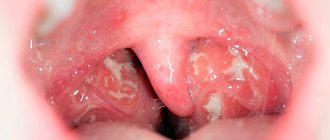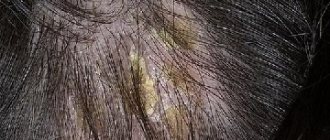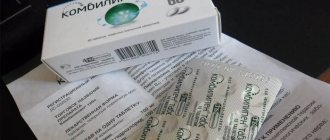Erysipelas is an unpleasant phenomenon that causes a lot of trouble for patients and is prone to frequent relapses. This disease is of infectious origin and is accustomed to manifesting itself with pronounced symptoms. It is important to pay due attention to the latter in time in order to get rid of the problem as soon as possible and protect yourself and your loved ones from it.
Erysipelas on the leg - what is it?
Erysipelas is an infectious disease that manifests itself through inflammation of the skin, including affecting its deeper layers. Most often, the pathology is localized precisely on the legs - this is explained by the greatest proximity of these parts of the body to the ground, and, accordingly, their inevitable contact with dirt and dust, where the pathogens of the disease may be located. After all, the culprit of the pathology – streptococcus – in the vast majority of cases enters the body from the external environment.
Absolutely anyone can suffer from erysipelas on the leg. But among people in older age groups, the disease most often affects women, and if we talk about younger patients, then, on the contrary, men clearly predominate among them.
Elderly people are also quite often susceptible to erysipelas, whose legs, due to an immobile (lying down) lifestyle, become covered with trophic ulcers, which provide a favorable environment for the penetration and development of infection.
Outbreaks of the disease are seasonal - the greatest occurrence of such cases is observed in the summer-autumn period.
The risk group primarily includes people who, due to the nature of their work, are forced to spend a long time in the open air or in unsanitary conditions (dust, dirt, etc.), as well as people who often receive microtraumas.
Possible complications
If the disease is not treated for a long time, parallel pathological processes begin in the body, and not only on the surface of the skin, but also internal organs suffer.
Lack of therapy can lead to:
- the formation of abscesses on the surface of diseased areas of the skin;
- phlegmon - abscesses that form in soft tissues;
- purulent phlebitis;
- necrotic form of erysipelas;
- purulent meningitis;
- blood poisoning.
Such consequences can be avoided only if you consult a doctor in a timely manner and refrain from self-medication.
Erysipelas on the leg: causes of the disease
The main culprit of erysipelas on the leg is streptococcal infection. Most often, its causative agent, streptococcus, enters the body through such “gates” as:
- scratches;
- scratching;
- insect bites;
- burns;
- diaper rash;
- injuries and bruises;
- cracked heels, etc.
In addition, erysipelas on the leg can be the result of an old streptococcal infection in the body (advanced caries, chronic tonsillitis). From the main focus, bacteria travel safely through the bloodstream throughout the body, causing problems of varying severity in all its systems - including provoking all kinds of dermatological diseases. A healthy immune system is a fairly reliable obstacle in their path, but if for some reason it is weakened, then erysipelas on the leg cannot be ruled out.
In addition to a weakened immune system, there are many other factors that can provoke erysipelas of the skin on the leg:
- frequent hypothermia of the legs;
- too much tan;
- sudden change in temperature;
- stressful situations.
In addition, some diseases and conditions themselves are an excellent background for the development of erysipelas on the leg:
- obesity;
- diabetes;
- trophic ulcers;
- fungal infections localized on the feet;
- alcoholism;
- thrombophlebitis;
- varicose veins.
Many people around the planet are unsuspecting carriers of the infection. A person may never know about this until the end of his life.
By severity
- Mild - this form is characterized by short-term (1-3 days) fever with a temperature rise not exceeding 39ºC, unexpressed other symptoms of intoxication, and an erythematous localized form of skin manifestations.
- Moderate severity - characterized by fever for 4-5 days, the temperature reaches 40ºC, other symptoms of intoxication are quite pronounced (there is severe weakness, headache, there may be nausea, vomiting); widespread skin lesions of erythematous, erythematous-bullous or bullous-hemorrhagic form.
- Severe - fever with figures of 40ºC and above lasts more than 5 days, severe intoxication (up to the loss of consciousness of the patient), bullous-hemorrhagic and erythematous-bullous skin lesions, accompanied by complications in the form of gangrenous changes, phlegmon, infectious-toxic shock and even sepsis
Erysipelas on the leg: is it contagious?
Erysipelas on the leg is one of the contagious diseases. The infection is very easily transmitted from one person to another, so if possible, it is necessary to avoid contact with the patient - this is one of the very first preventive measures. And if someone with whom you live in the same apartment was injured, it is important to take additional safety measures during the period of illness. When caring for a patient (treating wounds, dressing), it is dangerous to forget about gloves, just like thoroughly washing your hands with soap after all procedures.
Prevention
There are several rules that, if followed, can minimize the risk of erysipelas appearing on the leg.
- It is necessary to limit contact with people suffering from this disease and carry out antiseptic skin treatment after each meeting;
- The appearance of erysipelas can provoke a weak immune system, so it is necessary to improve your health through exercise, adherence to sleep and rest;
- It is also advisable to avoid stressful situations;
- Another precautionary measure would be the timely removal of streptococcal infection from the body;
- You need to carefully monitor foot hygiene and avoid minor injuries;
- A disturbance in the condition of the venous system can affect the onset of the disease, so it is necessary to carefully monitor its operation and consult a doctor in suspicious situations.
The appearance of erysipelas on the leg can be considered a dangerous disease if in the initial stages it was not given due attention and from a mild form it developed into a more severe one.
Erysipelas responds well to treatment, the main thing is to start the right therapy on time and be sure to consult a doctor who can choose the right medications.
Symptoms of erysipelas on the leg
Erysipelas has a fairly long incubation period - about 10 days. After this time, symptoms begin to manifest themselves. As a rule, at the first stage a person feels signs of general malaise:
- headache;
- pain in the muscles;
- chills;
- weakness and powerlessness;
- increased body temperature (sometimes up to 39-40 degrees);
- in some cases - nausea, vomiting, diarrhea and sometimes even anorexia.
No later than a day later, local signs are added to these general symptoms: a burning sensation, pain, tension is felt in the infected area, it begins to redden and swell.
Further signs of erysipelas depend on the specific form of the disease.
Effective therapies
How to treat erysipelas of the skin? If the form of the disease is mild, a conservative therapeutic approach is used.
To cure the disease according to the classical scheme, the patient is prescribed:
- Antibiotics. In this case, it is advisable to use antimicrobial drugs from a number of penicillins (Amoxiclav) or sulfonamides (Sulfalen, Sulfadiazine). Sometimes Ceftriaxone, a drug from a series of cephalosporins, is used to treat erysipelas.
- Antiallergic medications aimed at eliminating and preventing the development of an allergic reaction that can be caused by the vital activity of streptococci: Suprastin, Tavegil, Eridez, etc.
- Painkillers and non-steroidal anti-inflammatory drugs: Nimesulide, Diclofenac, Meloxicam, etc.
- Antiseptic solutions for lotions or compresses on the site of inflammation. In this situation, the drug Chlorhexidine (0.005%) is used. They need to moisten a sterile bandage or gauze and apply it to the diseased areas. Secure with a bandage and leave for 2-3 hours. Compresses should be changed regularly.
The treatment course lasts from 10 to 14 days - it all depends on the severity of the disease and the extent of the pathological process.
Treatment of bullous erysipelas is usually carried out in a hospital. The same applies to situations where the pathology is severe. In case of necrotic erysipelas, surgical removal of dead tissue is performed.
Forms and types of erysipelas on the leg
Forms of erysipelas of the legs are classified according to the nature of local changes.
- In the erythematous form, redness of the affected area is observed. In this case, the resulting erythema, rising above the skin, has fairly clear boundaries, is distinguished by the irregular shape of its edges and a uniform bright color. Often peeling is subsequently added to this picture.
- At first, the erythematous-bullous form is no different in appearance from the erythematous form described above. However, after two or three days, the topmost layer of skin on the affected area begins to peel off. The process is accompanied by the formation of bubbles filled with a clear liquid. After the bubbles burst, brown crusts appear in their place. And what is underneath depends on the success of the treatment. If timely, qualified assistance was provided, then, most likely, after the crusts fall off, young, smooth, pink skin will appear. Otherwise, the occurrence of painful erosions, which are quite capable of transforming into trophic ulcers, cannot be ruled out.
- The erythematous-hemorrhagic form proceeds almost exactly the same as erythematous erysipelas. The only difference is the occurrence of hemorrhages in the affected area.
- The bullous-hemorrhagic form in appearance is very similar to erysipelas of the erythematous-bullous form. The difference is that the blisters are filled with an opaque liquid containing blood.
In addition to this classification, erysipelas is systematized according to other characteristics. Thus, depending on the severity of the manifestations, erysipelas can be mild, moderate and severe, and according to the frequency of occurrence, primary, recurrent and repeated erysipelas are distinguished.
Diet for erysipelas
After the disease has just begun, treatment for erysipelas should also include following a strict diet. The patient should eat water with lemon or orange juice. This diet can last no longer than a week. Afterwards, the menu should be diversified, but some products will have to be excluded from it.
Do not use:
- products containing caffeine;
- fatty foods and smoked foods;
- alcohol;
- salty and spicy dishes;
- meat and milk (if fever develops with erysipelas).
Good products that will help you heal faster are:
- apples;
- oranges;
- pears;
- apricots;
- peaches;
- honey;
- carrot.
Erysipelas on the leg: effective methods and features of treatment
At the first suspicion of the occurrence of erysipelas of the skin, it is necessary to urgently seek qualified medical help - to be specific, you should immediately undergo an examination by a dermatologist. The fact is that self-medication, as in all cases, is very dangerous. Advanced erysipelas can cause serious complications. Like other streptococcal infections, this disease can cause consequences in the form of myocarditis, rheumatism, and nephritis. There is also a possibility of specific complications - such as trophic ulcers, phlegmon and abscesses, elephantiasis of the extremities.
So, how to treat erysipelas on the leg? If we are talking about the initial severity, then outpatient treatment is quite sufficient. But in severe and advanced cases, hospitalization in the surgical department cannot be avoided.
As a rule, patients are advised to take antibiotics: penicillin, erythromycin, biseptol, furazolidone, oleanodomycin, etc. If the victim is treated in a clinic, then, as a rule, these drugs enter the body orally. In cases of inpatient treatment, courses of intravenous or intramuscular injections are carried out.
In addition to antibiotics, drug treatment includes the prescription of drugs such as:
- vitamins of groups A, B, C, etc.,
- anti-inflammatory drugs;
- in cases where the severe course of the disease is complicated by intoxication, detoxification agents are used in the fight for health - for example, reopolyglucin and/or glucose solution;
- To relieve painful and severe manifestations of the disease and symptomatic treatment, antipyretic, diuretic and vascular drugs are used;
- agents that reduce the permeability of blood vessels - their use is also necessary in some cases.
In the treatment of erysipelas on the leg, so-called local drugs are also widely used. We are talking about drugs such as furacillin solution, erythromycin ointment, enteroseptol in the form of ointments or powders.
If there is a bullous form of erysipelas on the leg, then a comprehensive, rather complex treatment is necessary. During the acute stage of the disease, the surgeon removes the blisters with careful movements and applies sterile dressings moistened with a solution of furatsilin or rivanol to their opened bottom. They should be changed several times a day. In this case, tightly bandaging the affected areas is strictly contraindicated.
If the erysipelas-hemorrhagic form of erysipelas is diagnosed, dibunol liniment (5-10%) is prescribed for application to the wounds. The procedure should be repeated twice a day for at least a week.
In addition to drug treatment, the following procedures, usually used during the acute period of the disease, significantly speed up recovery:
- local ultraviolet irradiation;
- exposure to weak electric current discharges;
- exposure to high-frequency currents;
- laser therapy in the infrared light range.
And lidase electrophoresis, magnetic therapy, and ozokerite applications significantly improve lymph flow and effectively eliminate the so-called elephantiasis of the extremities.
Erysipelas of the skin - treatment
Almost all patients with erysipelas receive outpatient therapy. Only particularly severe, elderly patients and young children need to be hospitalized. The doctor chooses how to treat erysipelas, based on the picture of the clinical manifestations of the disease. The selection of therapy is influenced by the nature, severity, frequency of the disease and many other factors.
Medicines for erysipelas
Since this disease is caused by bacteria, antibiotics for erysipelas are prescribed regardless of the area of localization, scale, or complexity of the lesion.
The most effective antibacterial agents for illness:
- Phenoxymethylpenicillin;
- Bestum;
- Doxycyline;
- Droxil;
- Levomycetin;
- Intrazolin;
- Betasporin;
- Biotraxon.
To relieve swelling, use Chlotazol or Butadione. Intoxication is fought with droppers containing solutions of glucose, Hemodez or calcium chloride. For inflammation and as antimicrobial agents, the following have proven themselves well:
- Sulfadimethoxine;
- Biseptol;
- Prednisolone;
- Furamag;
- Furazolidone.
To strengthen the immune system during erysipelas, medications such as:
- Timalin;
- Ascorutin;
- Taktivin;
- Methyluracil;
- Pentoxyl.
Ointment for erysipelas
Such treatment is prescribed, as a rule, in cases where it is necessary to overcome external lesions and reduce pain. Treatment for erysipelas at home involves the following ointments:
- Streptocide.
This remedy is effective against streptococci and quickly relieves inflammation. - Erythromycin.
Antibacterial medicine with high efficiency. - Tetracycline.
This antibiotic has a wide spectrum of action, but it is very inexpensive. - Syntomycin.
A universal drug at an affordable price. The ointment is easy to use but very effective. - Vishnevsky ointment.
Thanks to it, the blisters in erysipelas are opened much more actively. - Ichthyol.
Helps at any stage of the disease, but it is better to use the ointment from the very beginning of the disease.
Physiotherapy for erysipelas
Ideally, it should be started from the first day of illness. For a problem such as erysipelas, physiotherapy treatment helps to cope with bacteria and quickly eliminate inflammation. After the start of therapy, pain decreases, itching and redness of the skin disappear. One of the most popular procedures is ultraviolet irradiation. You need to do it every day or every other day. In most cases, changes for the better appear on the second day. In addition to UV irradiation, electrophoresis with penicillin works well for erysipelas.
Erysipelas - folk remedies
Even traditional medicine admits that in the initial stages, traditional methods of combating erysipelas are perhaps the most effective. Compresses for erysipelas with pork fat, for example, not only remove signs of the disease, but also prevent the infection from spreading to adjacent areas of the skin.
In addition to this remedy, the following recipes help a lot:
- Frog caviar.
This is a good wound healing agent with an antimicrobial effect. Before making a compress, pre-dried caviar must be soaked. No other ingredients may be added. It is best to leave frog eggs overnight, and after three sessions there will be almost no trace left of the erysipelas. - Plantain.
Fresh, clean leaves are finely chopped and kneaded a little, and then mixed with honey in equal proportions. After a couple of hours of boiling, the mixture can be applied to a bandage and applied to the wound. It is advisable to change compresses with plantain every 3 to 4 hours. - Kalanchoe.
The juice of this plant is a real healing agent, and it also helps with erysipelas. It should be used for compresses. For greater effectiveness, the juice can be mixed with a small amount of 0.5 percent novocaine. - Burdock.
Large leaves are applied instead of cloth for compresses. It is most effective to lubricate them with rich homemade sour cream before applying. You can walk with burdock compresses for a long time. The main thing is to change them a couple of times a day.
How to prevent it from appearing?
In order to prevent the occurrence of erysipelas on the leg, it is imperative to treat all skin diseases that appear in this area. The occurrence of a rash and other manifestations of a problem should be a reason for an immediate visit to a specialist.
If a person suffers from excessive sweating, it is necessary to use powder or talcum powder. High humidity is a favorable environment for the proliferation of microorganisms.
Avoid excessive exposure to ultraviolet radiation. The burns that the sun can leave on human skin can cause a number of serious diseases. At the same time, erysipelas is not the worst of them.
It is worth paying special attention to foot hygiene. When washing, you should use warm water, avoiding hypothermia. The use of soap products will prevent the accumulation of large numbers of microorganisms on the skin. When choosing a shower gel, you need to pay attention to the pH level.
Do not ignore the appearance of corns and cracked heels. A minor lesion can cause significant health problems in the future. If a person notices microcracks on the feet, it is necessary to immediately take measures to promote their rapid healing.
Preventive actions
In order to prevent erysipelas in children, parents should adhere to some recommendations:
- avoid injury and abrasions of the lower extremities;
- in case of frequent relapses, carry out prophylaxis with antibacterial drugs that can stop the spread of infection in the child’s body;
- If a staphylococcal infection is detected, treat it promptly.
The duration of treatment is determined by the attending physician.
Folk remedies (5 recipes)
Treating erysipelas with folk remedies is allowed only in the initial stages, but as an auxiliary method to the main therapy and after medical consultation.
Otherwise, you can only aggravate the situation and then the inflammatory process will smoothly flow into the chronic stage.
Since ancient times, herbs have been used to treat erysipelas, which significantly alleviate the patient’s condition. But their effect is not as strong as that of antibiotics.
So what can be the treatment for erysipelas of the face (as in the photo above) at home? To do this, you can use the following recipes:
- Apply compresses to the affected areas: honey with propolis, crushed plantain or aloe leaves, a decoction of burnet (horsetail, nettle, dandelions, oak bark).
- Treat red spots with an alcohol tincture based on: calendula, eucalyptus.
- Lubricate the skin with a weakly concentrated solution of potassium permanganate or camphor oil.
- Apply a bandage with any mixture: crushed burdock and chalk, fresh burdock leaves and sour cream, yarrow and unsalted butter.
- A cold compress made from cosmetic clay relieves burning and pain well. Rapid tissue regeneration is facilitated by a composition prepared by mixing sea buckthorn oil and freshly squeezed aloe juice.
Preventive action
These include:
- maintaining personal hygiene;
- treatment of damaged areas of the dermis with antiseptic agents;
- timely treatment of fungal infections of the feet and nails;
- maintaining immunity;
- wearing loose clothing made of cotton materials;
- health promotion;
- for patients suffering from diabetes, follow all doctor’s recommendations;
Important: diabetes mellitus is a prerequisite for the formation of a dangerous form of the disease, namely gangrenous erysipelas.
If relapses occur, doctors recommend antibacterial agents to prevent secondary infections. For these purposes, the drug Bicillin is usually prescribed. The schedule and duration of its administration is determined by the attending physician and depends on the frequency of relapses.
The entire range of measures to prevent erysipelas is aimed at protecting the body from the causative agent of the disease.
Forecast
Depending on the time at which the patient sought medical help, as well as the body’s response to therapy, the further outcome is largely determined. With early treatment, as well as a good response to treatment, the prognosis is favorable. With prolonged absence of treatment, the presence of drug resistance, and high activity of the pathogen, the outcome may be unfavorable for the patient. More often, a serious condition ends with the removal of the limb above the affected joint, this allows you to stop the inflammatory process and save the person’s life. When the inflammatory process generalizes, it quickly spreads throughout the body, causing death.
Symptoms of the disease
The symptoms of the disease are quite characteristic. However, they can confuse the doctor, leading to an erroneous diagnosis. The incubation period of the disease lasts from several hours to 3-4 days. Then the patient begins to experience the first symptoms of erysipelas on the leg. The person feels unwell and feels overwhelmed. All this arises against the background of general weakness. Then, quite suddenly, there is a rise in temperature. The person may experience headaches and chills. The temperature persists for the first few hours. The value of the indicator can reach up to 40 degrees. Additionally, there is pain in the muscles in the legs and lower back. A person complains of discomfort in the joints. In some cases, the patient may experience vomiting, diarrhea and nausea. Sometimes anorexia can develop against the background of the disease.
After a day, characteristic local signs are added to the general symptoms. The affected area begins to redden and swell. The person feels a burning sensation and pain. Tension is felt in the area where the erysipelas forms. Further symptoms directly depend on the type of disease.
The lesion has uneven jagged boundaries. Inflamed skin appears slightly shiny. It is dry and hot to the touch. Bright redness may be replaced by bluish, congestive edema. It occurs due to the fact that there is a local disturbance of blood microcirculation. Small hemorrhages often appear. They arise due to damage to the walls of blood vessels, as well as sweating of the formed elements.
On the second or third day of the disease, signs of lymphostasis with the development of dense lymphatic edema may be added to the general symptoms. It is at this moment that bubbles often appear within the lesion. They are filled with clear liquid. Sometimes it may contain blood.
After the blisters open, a dense brown crust appears at the site of the disease. Erysipelas gradually expands. However, if adequate treatment is carried out, the temperature returns to normal within 3-5 days. If the disease manifests itself in an erythematous form, its symptoms will disappear after 8-9 days. In hemorrhagic syndrome, they can persist for 12-16 days.
After the hyperemia and swelling of the skin decreases, its surface begins to itch and peel. During this period, some patients experience dark, congestive hyperemia and uneven hyperpigmentation. Subsequently, they will disappear on their own. If a person has suffered severe bullous hemorrhagic erysipelas, traces of the disease may persist for several years and even decades.











